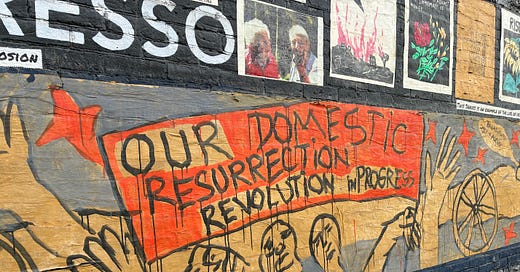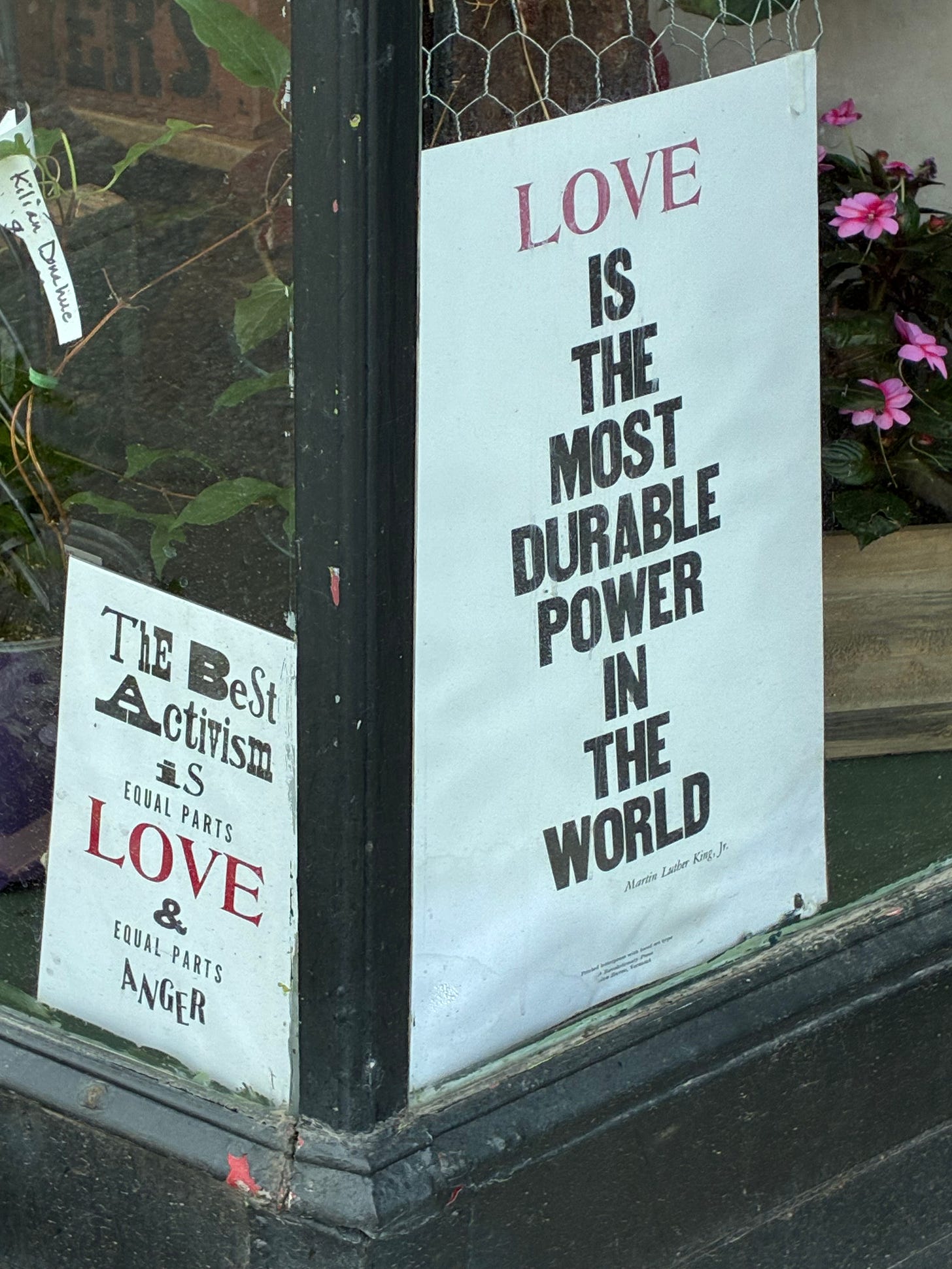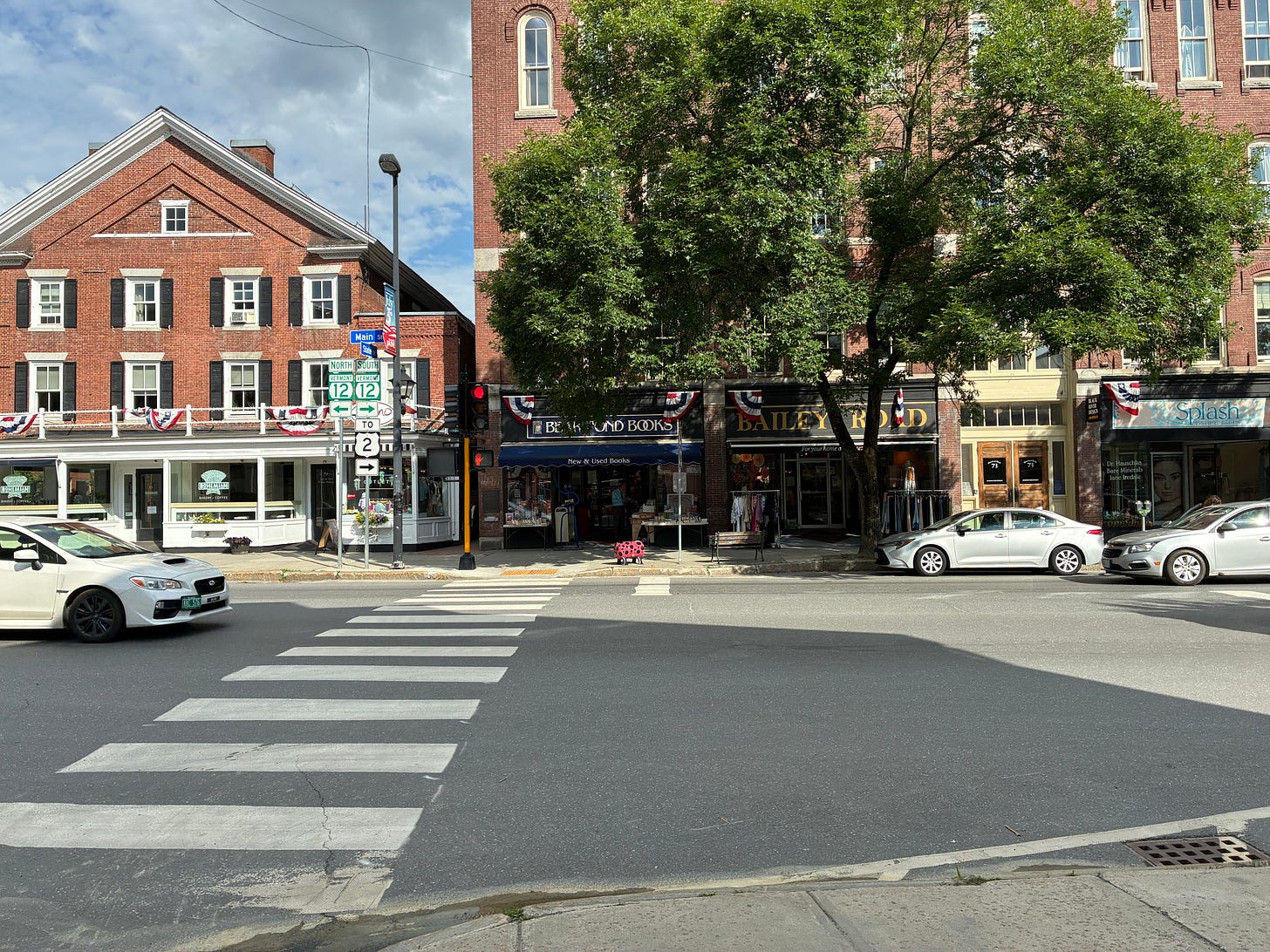This is an entry in my Vermont 251 Club series. The main post — which lists all 252 places in Vermont — is here. As I visit each one and write about it, the name will become a live link. The first one, telling the story of my adventure in Middlebury, is not behind any paywall and is available here. Richmond, home of The Round Church, is here.
This one isn’t paywalled because I was in a mood, but most of the Vermont 251 entries will be, so if you think you would enjoy reading more of these, consider subscribing. Here’s a coupon.
The Capital and the Costume
It’s hard to describe the moment it hits you—how completely tiny Montpelier really is.
Not just small-town small, but “this is the capital?” small.
Eight thousand people.
Just a few blocks of red brick, a few dozen shops, and a gold-domed capitol that looks more like a museum prop than the real seat of power for one-fiftieth of the United States of America.
Two percent of the governmental structure of the most sophisticated military-industrial complex in the history of the universe.
I go to Montpelier a lot because one of my closest friends,
, lives there. But for 251 Club purposes, I made my July 9 visit my official one—and I’m glad I did.Because once I was looking closely, I couldn’t stop seeing it: the fragility beneath the charm.
I think about Stephen King’s novel, The Stand, all the time. The premise is simple: our government has the plague in a lab. It escapes. Someone is just a little too slow to close the gates…and that misstep of a few seconds starts a chain reaction that ends the world.
But you don’t even need a Stephen King plot twist to imagine how quickly it could all come apart.
One charismatic crank in the statehouse. One radicalized insider.
A few bureaucrats who know how the gears really turn—your archetypal Church Secretary types, the ones who quietly run everything while someone else stands at the podium.
It wouldn’t take much to bring the whole thing down.
It would take barely anything at all.
That’s the risk of centralizing power in a town this small: there’s no buffer.
No failsafe.
There’s a kind of quiet terror beneath all the peonies and painted signs.
Montpelier feels picturesque, because it is.
But it's also profoundly performative.
Walk down the street and you’ll see it: handmade signs in shop windows declaring allegiance to every progressive virtue.
Posters that shout about racism, inclusion, anger-as-activism, and "all kinds of people welcome here."
That one made me laugh. All beliefs welcome? I bet
and I could show up to eat there and say what we really think about, oh, the transgender agenda — and their tolerance would find limits awfully damn quick.I saw exactly one person of color the entire day. Just one.
And according to the 2020 census, Montpelier’s black population is 87.
Not 87 thousand. Eighty-seven people.
And yet the town is papered with racial justice signage—windows, flagpoles, shopfronts, sandwich boards.
Every surface has been drafted into a one-sided conversation with an imagined audience that simply doesn’t exist.
No, I’m not saying the 87 black residents of Montpelier don’t count.
I’m saying that they don’t exist in the sense that the signage indicates.
Not really. Not in numbers that would make sense of the scale of it.
It’s not that the messages are wrong.
It’s that they feel, and are, parasocial—like the whole town is performing virtue for an invisible stranger it’s desperate to impress.
A stranger who is always watching, always judging, always just out of frame. It’s not a real relationship; it’s a simulation of one, constructed from curated slogans and a hyper-awareness of how things might look.
And if you’re one of the fewer-than-ninety people of color living here? How does it feel to be the stand-in for that imagined other? To walk down a street where every window insists it welcomes you—but in a way that makes it very clear you’re the symbolic audience.
Not the neighbor.
You’re not a person. You’re a proof-of-concept.
You’re a “Black Lives Matter” yard sign come to life.
It has the same unsettling energy as influencers who film themselves crying about injustice, eyes angled just so toward the camera, wet with sincerity. Ring-lit like a makeup tutorial.
You’re witnessing a performance of intimacy stemming from solidarity and genuine caring.
But it’s not.
And it’s also Not. For. You.
It’s for the feed.
And in Montpelier, the whole fucking town is the algorithmically trained feed.
It reminded me of a guy I once dated, a black writer who got his MFA at the Vermont College of Fine Arts. He told me—flatly, bitterly, and with an air that suggested he expected me to not believe him—that he got nothing out of it.
Not a single professor or classmate ever critiqued his work, no matter how much he asked. They just told him he was brilliant. Over and over and over and over and over again.
It was purely performative reverence in place of actual engagement. A parasocial drama of which he was the star, against his will and without his consent.
It was like being a kid from a reality show whose parents had made him famous and scripted his life before he could object — walking into every room knowing that some invisible calculus was already underway.
A drama he starred in, but that was never really about him.
The result? He left with a degree and the sick certainty that he hadn’t grown at all.
I considered applying to the same school, for visual art. My drawing is becoming a source of joy and meaning in my life, and the thought of going to school to improve it was tempting enough that I shot an email to HR asking if my company does tuition reimbursement.
But it would only be a local program that I’d consider, and the VCFA program is beyond farcical. I sat at Josh’s house scrolling their website and laughing.
This was about two weeks ago — Josh was cooking me dinner and I was hollering at him through peals of laughter.
You pay $60,000 to "work independently on your practice," read a little theory, and present your art to people who won’t actually challenge you.
It felt like a vending machine degree. Drop in a check, receive validation.
Montpelier is like that too, in miniature.
A beautiful surface wrapped tightly around an unsettling, performative, empty hollowness. A town so small that nearly everyone works for the state—or is related to, renting from, sleeping with, or living with someone who does.
It’s not a facade, exactly. But it’s close enough to costume that I found myself looking twice at everything: the buildings, the bookstores, even the welcome signs.
They’re colorful. Earnest. Hand-painted, most of them. After all, this town of 8,000 supports a fantastic little independent art supply store.
But behind them is a machine that, should the wrong person grab the levers, might not even squeak in protest as the wheels come off.
The Drawing Board art store was lovely. The booksellers knew their stock. Julio’s served me exactly the kind of polite, mild Tex-Mex a Vermonter might apologize for.
But walking out into the soft, overheated evening, I couldn’t shake it: this is our capital?
It’s all so small.
And all so breakable.


















